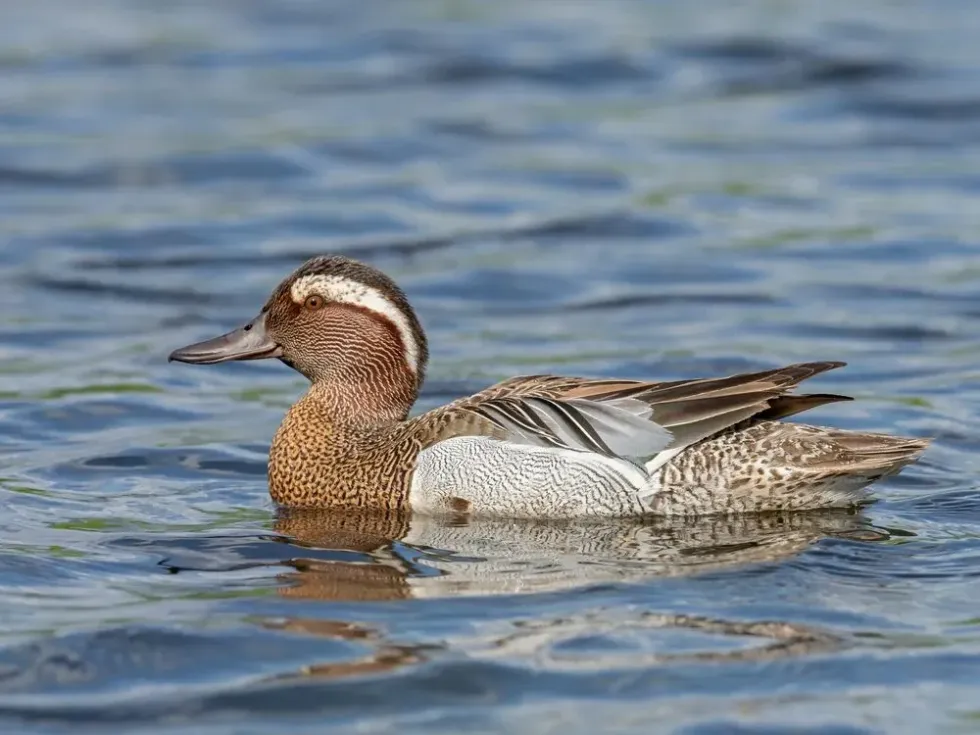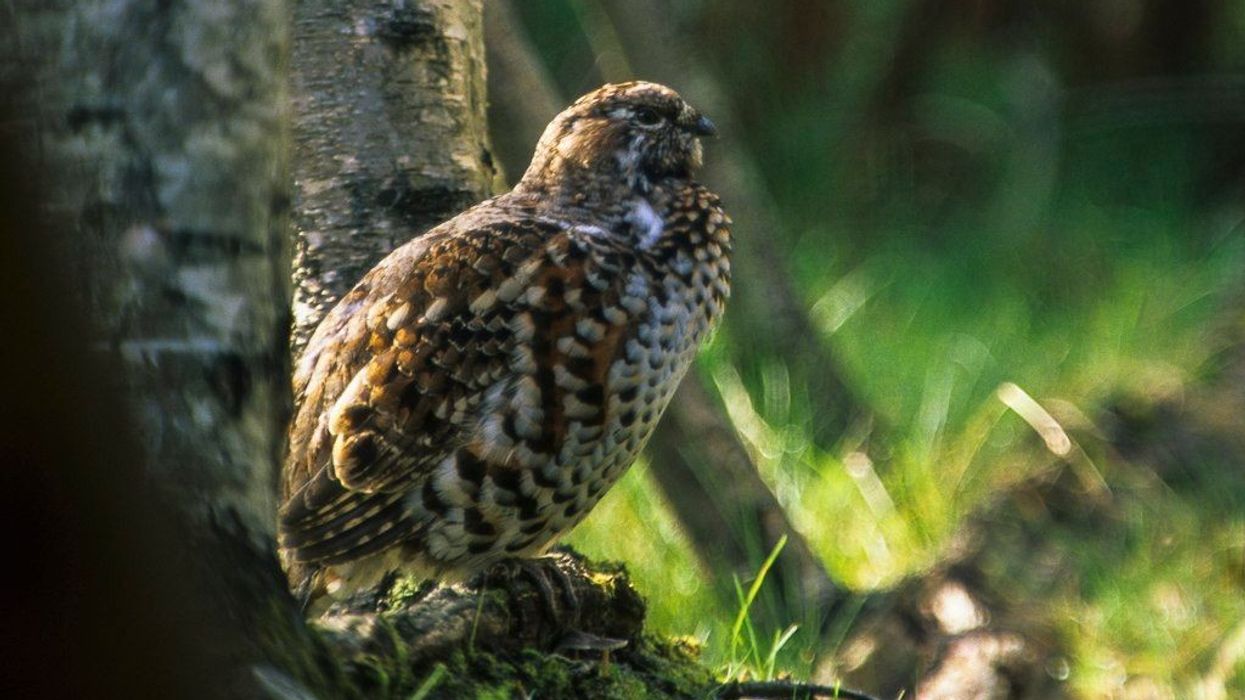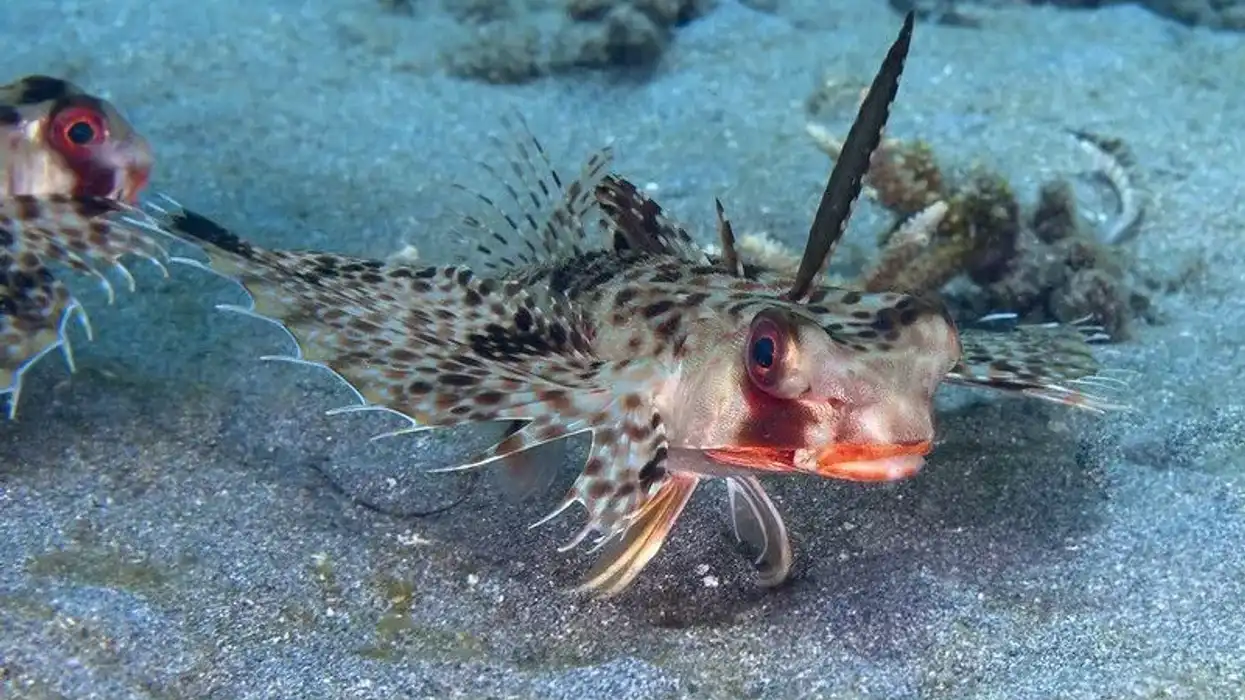The garganey of the Anatidae family, with the scientific name Spatula querquedula, is an old-world dabbling duck species that are found distributed throughout the world, especially in the European continent. They are also known by the name Anas querquedula.
They are found in shallow aquatic or wetland habitats and are commonly visible throughout their entire range. However, their overall numbers follow a gradual decreasing pattern in some parts.
These birds are identified by various conservation sites throughout the Garganey range. A female garganey lays eight to 11 eggs per mating season with peaks in May, which are guarded by the male.
The female garganey incubates the eggs alone for a span of 20 to 21 days, and the male protects them during that span. Chicks come out from the eggs that fledge about 35 to 40 days after hatching with the help of the female garganey.
The bird looks similar to blue-winged teal and cinnamon teal. If you are interested to learn and know more about this bird, continue reading these amazing facts.
If you want to learn more about other ducks, check out the Harlequin duck and Ring-necked duck facts too.
Garganey Interesting Facts
What type of animal is Garganey?
The garganey duck, also known as Anas querquedula, is a type of aquatic bird.
What class of animal does Garganey belong to?
Garganey ducks of order Anseriformes belong to the class Aves which is the common class for all birds.
How many Garganeys are there in the world?
The population of garganeys does not show any concern as of yet. The global population of these birds is estimated at 2,600,000 to 2,800,000 individuals, of which most are found in different European countries. Russia is the home to 80% of the European breeding pairs.
Where does Garganey live?
A garganey duck shows a large range of natural habitats. They also have different winter habitats and breeding habitats. It is an old-world bird that originally occurs throughout the Palearctic zone of Europe.
This bird that breeds in Western Eurasia spends their winter in the southern parts of Africa and Central Africa. They also fly to Southeast Asia countries during winter. Large flocks of these dabbling ducks might be found in India, Australia, Indonesia, and Bangladesh in winter.
What is a Garganey's habitat?
Garganeys prefer swampy marshes and freshwater pools or lakes, flooded plains, and meadows as their breeding locations. The water birds breed in areas where emergent, floating vegetation is abundant.
Fringe vegetation should also be present in the coastal marshes of freshwater lagoons in their breeding habitat. Mating takes place at an elevation of at least 3937 ft (1200 m). The birds migrate to southern tropical lands in winter.
During migration, these birds are seen to rest on marine inshore water or salty marshes. Breeding nests are produced amidst tall grass to provide privacy, but shrubs are generally ignored.
Who do Garganeys live with?
Garganeys live either in solitary or in loose colonies throughout their nesting site. During migration, these species fly together, flocking in large numbers.
How long does Garganey live?
Garganey birds can live for a span of 20 to 30 years.
How do they reproduce?
Garganey ducks sexually mature when they turn one year old. The mating pairs arrive on the breeding ground from mid-March to May.
The breeding season of these birds starts in the early summer months between April to May. The bird pairs bond with each other during their flight in the winter migration.
Many males display courtship together in these flights where they lean back with their crown touching the back and bill pointed in the upwards direction. In their breeding sites, nests are created by the female garganey.
They build a shallow depression or crest-like structure on the ground closer to water and border the nest with plant matter and feathers. This species produces a single brood per mating season, laying eight to 11 eggs.
What is their conservation status?
The International Union for Conservation of Nature (IUCN) has listed garganeys as a species of ‘Least Concern’ in their Red List. Few conservation actions have been allotted for them as they are gradually decreasing in number.
Garganey Fun Facts
What do garganeys look like?
Garganeys are small and dabbling aquatic ducks. Male birds in their non-breeding plumage are difficult to identify from females. In their breeding plumage, a male has a dark brown head and pale gray flanks.
Flight strokes show a pale blue patch under the wings. They also have broad white eyebrows which is contrasting with the brown head. The brown color helps to separate the female from the common teal, like the blue-winged and the green-winged teal.
The bill shape and head shape in a garganey bird is different from a common teal. The broad white eyebrow is absent in the female bird. Juvenile birds look similar to females, with some brown spots in the underpart.
How cute are they?
The small and pudgy duck-like structure makes garganeys look very cute. They form a good choice as pets and are not even very aggressive.
How do they communicate?
This bird species communicate by a distinctive call. Males make a rattling and cracking call during mating. Females generally remain silent, however, they sometimes produce a short and high feeble call to communicate.
How big is Garganey?
Garganeys are a small species of freshwater ducks. They measure 14.5-16.1 in (37-41 cm) in length and their wingspan ranges between 22.8-27.1 in (58-69 cm). These birds are almost one-quarter the size of goliath herons.
How fast can Garganey fly?
Generally, garganeys have a fast flying pattern, but their speed is not yet determined.
How much does Garganey weigh?
The weight of the garganey species ranges between 10.6-15.5 oz (300-440 g).
What are the male and female names of the species?
Male ducks are referred to as drakes, so a male garganey will also be called a drake. Females are referred to as ducks.
What would you call a baby Garganey?
The babies of the garganey species are called chicks.
What do they eat?
The diet of garganey birds varies according to seasons. They are omnivorous. In the summer, they eat worms, insects, mollusks, crustaceans, small fish, and frogs. During the non-breeding period, these birds mainly feed on a vegetarian diet like leaves, weeds, grass, and seeds.
Are they dangerous?
These birds are not very dangerous and do not cause much harm. However, during migration, when they gather in large flocks, they are known to attack vast stretches of farmlands as well as farmers.
Would they make a good pet?
They form a good choice as pets. A domestic garganey duck will require large open spaces and nearby water habitats to survive. They can't be kept with poultry as they will hunt the poultry birds.
Did you know...
The garganey duck becomes flightless for a period of two to three months when they molt into their breeding plumage.
When do Garganey ducks molt into their breeding plumage?
Garganeys molt into their breeding plumage after their spring migration in March and April. They sexually mature at one year of age. Only after that can they molt into their breeding plumage.
How to pronounce Garganey?
In English, garganey pronunciation is like 'gar-ga-nei'.
Here at Kidadl, we have carefully created lots of interesting family-friendly animal facts for everyone to discover! Learn more about some other birds including the king eider or fulvous whistling duck.
You can even occupy yourself at home by drawing one on our free printable garganey coloring pages.








